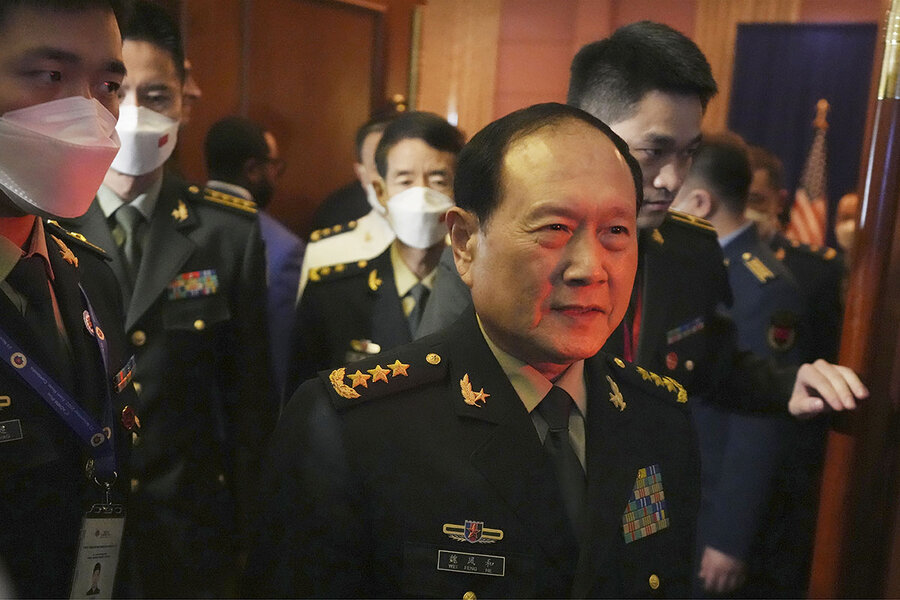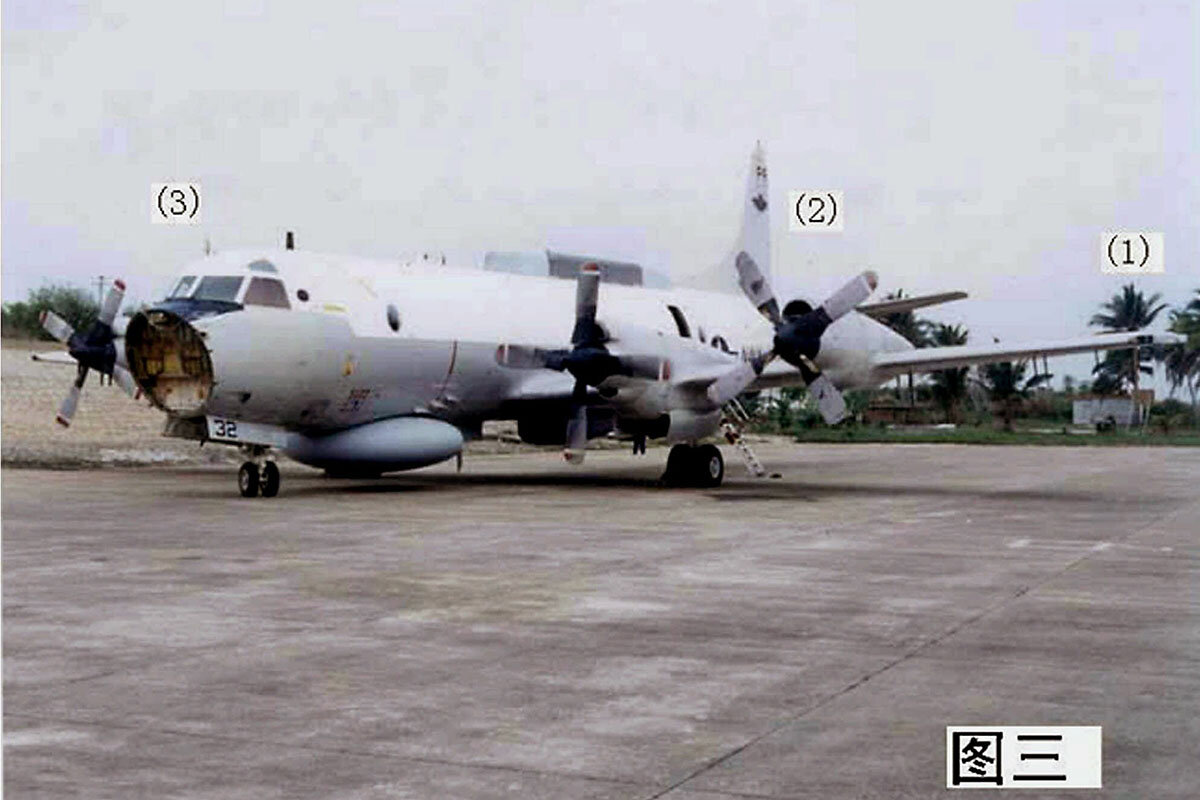US-China conundrum: Can hotline diplomacy work if trust isn’t a goal?
Loading...
| Washington
Shortly after the U.S. Air Force shot down a Chinese balloon that had traversed the continental United States for several days last month, Defense Secretary Lloyd Austin placed a call to his counterpart in Beijing.
At his disposal: a special hotline intended to help the two increasingly competitive global powers to prevent sudden tensions from deteriorating into full-blown crises.
The call went unanswered.
Why We Wrote This
A story focused onHow do you preserve crisis communications with an adversary who is suspicious of your use of them? The U.S. is finding China isn’t interested in hotlines, which spells trouble as their rivalry heats up.
The Pentagon later lamented the lost opportunity for the two sides to talk out the balloon flare-up before it devolved, as it soon did, into a diplomatic imbroglio.
For its part, China’s Defense Ministry confirmed that its chief, Wei Fenghe, had declined to take the call because the U.S. by its action had “failed to create a proper atmosphere” for a bilateral dialogue.
The episode was instructive, say national security experts. China’s cold shoulder to a hotline call from Washington underscores glaring misunderstandings in the U.S.-China relationship and key differences in how the two sides view crisis management.
Moreover, they add, it very likely portends a future where tense moments in an increasingly fraught big-power confrontation end up bigger crises because of a lack of reliable and mutually trusted communications channels.
“It is worrying when, as we saw in the Chinese response to the balloon incident, there’s this rejection of the channels of communication that could help prevent something dangerous from spinning out of control,” says Victor Cha, the Korea chair and senior vice president for Asia at the Center for Strategic and International Studies (CSIS) in Washington.
The U.S. grew accustomed to working with what some simply call “hotline diplomacy” after decades of at least figuratively turning to the famous red telephone to defuse tensions with its chief Cold War adversary, the Soviet Union. Diplomats say partial credit for the world’s two major nuclear-armed powers managing to avoid a nuclear confrontation must go to the crisis communications channels the two established.
Evidence that those channels are still operative with post-Cold War Russia surfaced last month when the White House revealed that it had informed the Kremlin of President Joe Biden’s unannounced trip to Kyiv hours before his departure from Washington. The notification was given “for deconfliction purposes,” according to national security adviser Jake Sullivan, who offered no further details “because of the sensitive nature of those communications.”
The difference from the China case is that both Washington and Moscow value the lines of communication and trust their interlocutors at least enough to share sensitive and even difficult information with them, experts say.
Increasingly for Washington, they add, the challenge is going to be: How do you establish potentially disaster-preventing communications channels with an adversary when the other party doesn’t want them – and is suspicious of your motivations for wanting them?
“The problem for Washington is that the PLA has never been interested in these channels,” says Michael Green, a National Security Council Asia adviser in both the Bush and Obama administrations, referring to the People’s Liberation Army, China’s military. It “views transparency and confidence-building communications as disadvantageous for them.”
The Chinese, he says, are wary of any steps that might encourage or normalize what they see as provocative behavior.
“They don’t want to make it easy for us to do what we are already doing, like flying patrols over the South China Sea,” says Dr. Green, now chief executive officer at the United States Studies Centre at the University of Sydney.
“They want us to be anxious and nervous,” he adds, “so confidence-building and trust are not exactly priorities.”
In line with that, news reports have quoted various unnamed official and unofficial Chinese sources considered “close to the government” as saying in the wake of the balloon crisis that Beijing sees the U.S. obsession with “hotlines” and crisis management as a way to normalize increasingly brazen behavior.
For Dr. Cha at CSIS, China’s reluctance to use communications as a tool of crisis management points up profound differences in the natures of the two powers’ military systems.
“In our system, our main goal is to avoid escalation and to resolve the situation,” he says. “In the Chinese system, the impulse is to not be blamed for a mistake and to not be the bearer of bad or difficult news. It’s not just that the PLA doesn’t want to talk to our military,” he adds. “It’s that no one wants to be the one to take bad news up to the top.”
Dr. Green recounts nearly three decades of experience in the U.S. government when he worked on initiatives aimed at smoothing communications with China.
The two sides reached a Maritime Security Cooperation Agreement in the later 1990s designed to allow the commander of the U.S. Pacific Command to “get through quickly and directly” to his Chinese equivalent when some movement of ships or confrontation threatened to boil over. “It didn’t work,” he says.
By 2001, when bilateral relations were shaken by a midair collision over the South China Sea between a Chinese fighter jet and a U.S. Navy EP-3 reconnaissance plane, Dr. Green was serving on President George W. Bush’s national security Asia team.
“President Bush made 12 attempts to get through to his counterpart,” Jiang Zemin, “but he couldn’t do it,” he says. That was very concerning in the White House at the time, he adds, “but everything suggests we are no better off 20 or 25 years later.”
Indeed, many former officials and U.S.-China experts say the lack of useful communications channels is, if anything, more worrisome today. That’s because the relationship has turned more confrontational and tense as China has built up its military might – including its nuclear arsenal – while asserting itself more forcefully in its neighborhood, including over Taiwan. At the same time, the U.S. is rebuilding and extending its military presence across the Indo-Pacific region.
Dr. Cha says in his view the Chinese aren’t being “tactical” with their lack of transparency. “I don’t think they want to be unpredictable as a way to deter you.”
But he says that, as the balloon incident demonstrates, “they don’t want to communicate, so they go immediately to disinformation.” He also notes that instead of dialogue the Chinese have increased provocative actions near Taiwan and stepped up their “harassing” of U.S. reconnaissance planes.
“China is supposed to be a great power, but this is not how great powers act,” he says.
And no one seems to think China’s approach to big-power communications and crisis management will change any time soon, since it is so deeply rooted in their system.
Dr. Green looks back at the evolution of U.S.-Soviet crisis management and hotline diplomacy and notes that it was the 1962 Cuban missile crisis and a sense that the world had teetered on the nuclear precipice that convinced both sides of the necessity for open channels of communication.
“The cynical view today would be that we just need to get to the brink of destroying the world for the Chinese to come around on this,” he says. Indeed, he adds, it’s not just cynics who “worry that it might take a Cuban missile crisis to set up these kinds of crisis management lines” that both sides answer.









